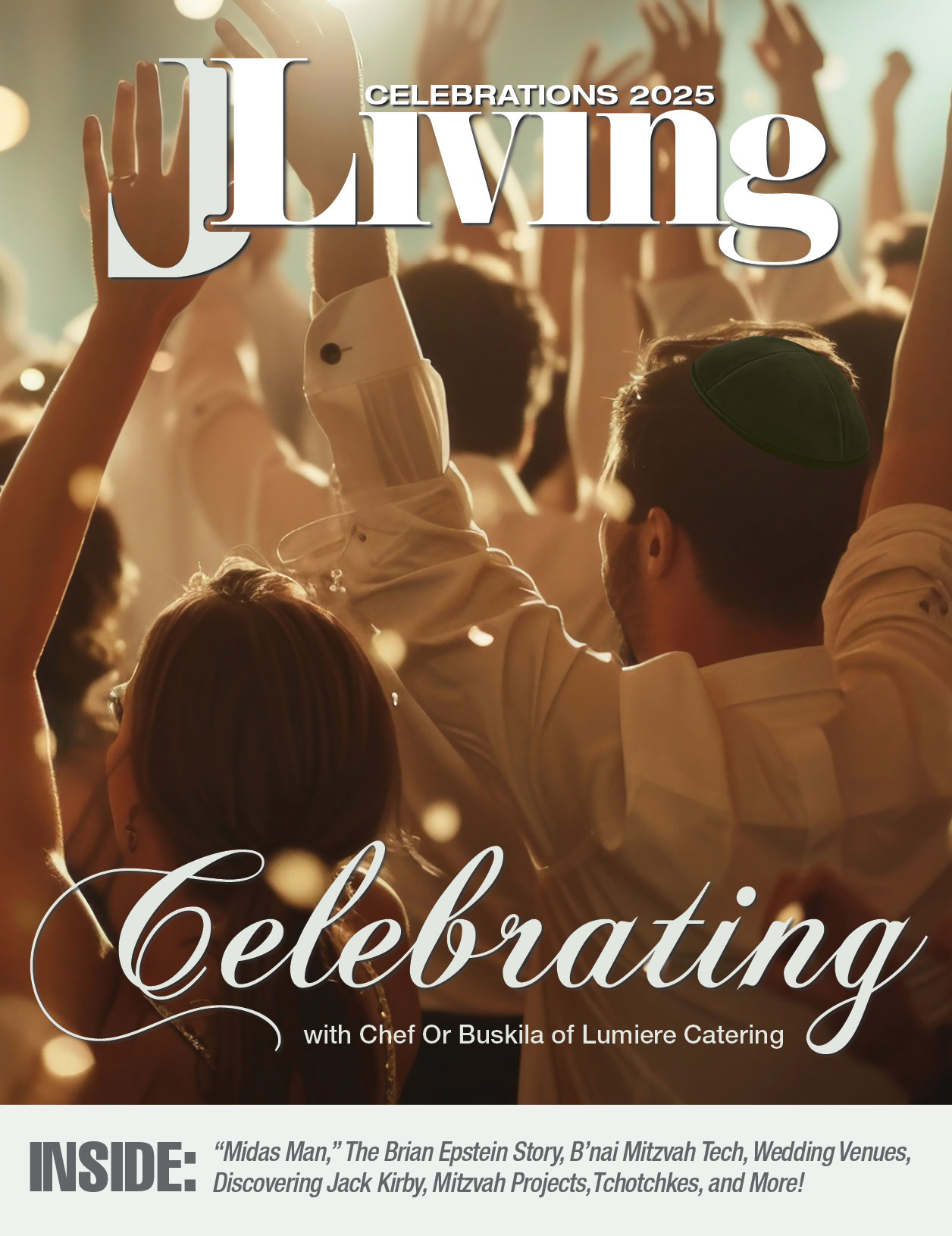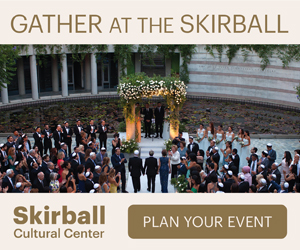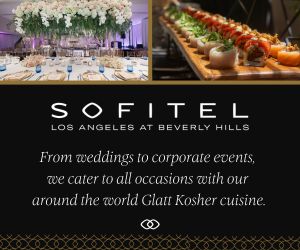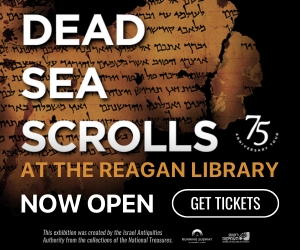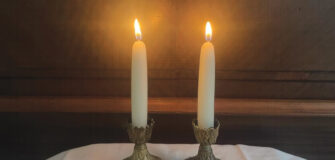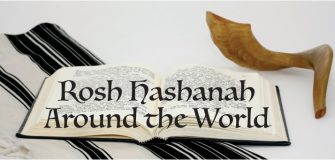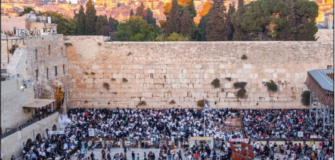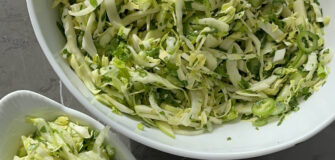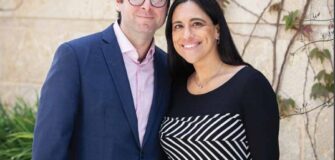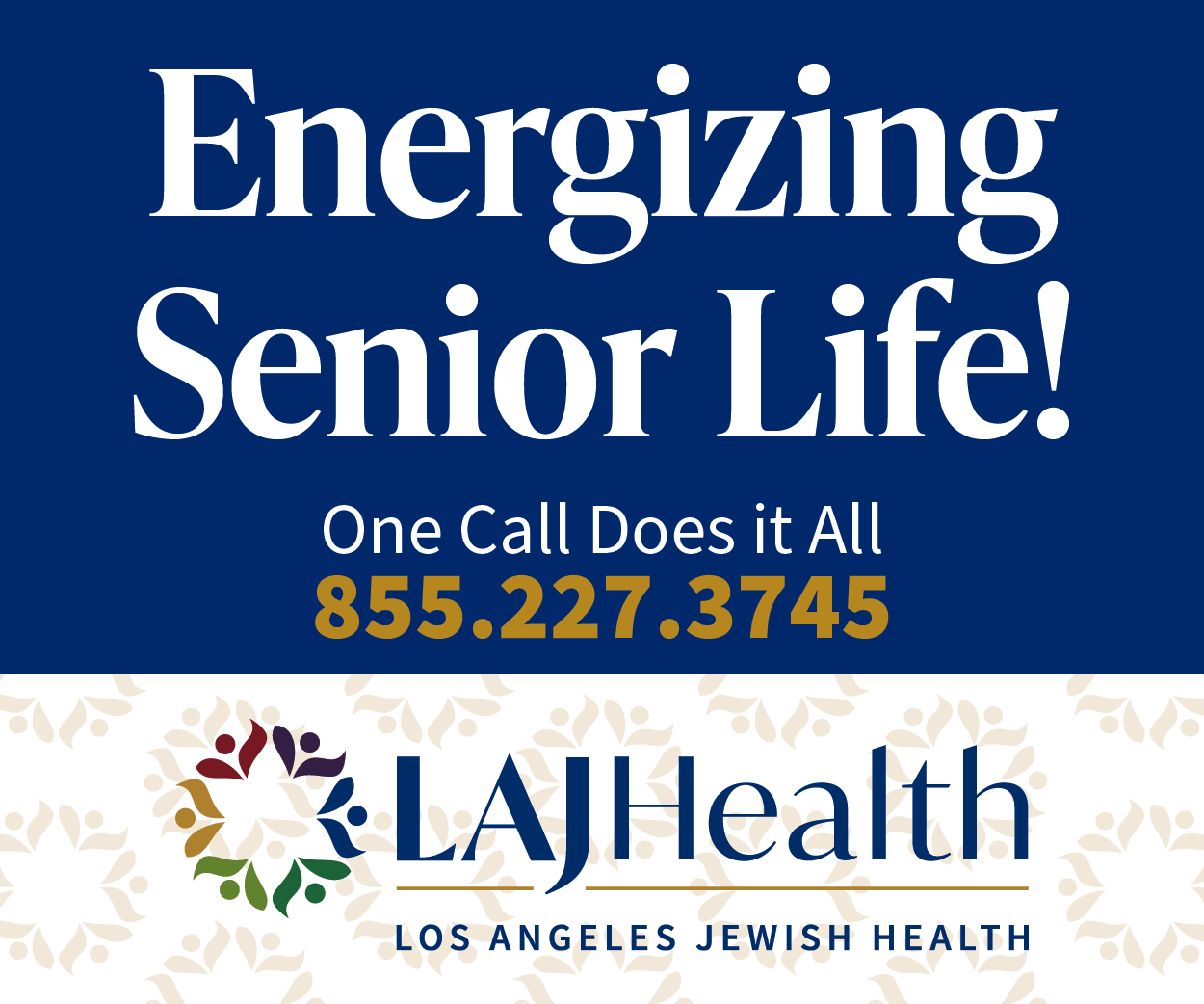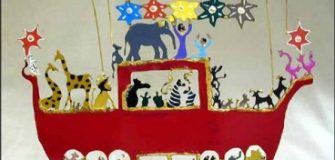The Glow Within and Without by Rabbi Cantor Eva Robbins
Hannukah, the magical holiday and favorite of young and old alike, is a joyous celebration with foods, music, gifts, and rituals that bring smiles to all who engage with it. Eight days, when darkness comes upon us earlier than we’d like, we have the opportunity to share the glow of candles dancing before us.
Candles, like the colors of the rainbow, reminding us of our past, our present, and our future. The symbols – menorah, dreidel, latkes, and gelt (Yiddish for money) all serve to connect us to our heritage and our history, though for many the true meaning and historical significance has been lost.
In our assimilated culture, where Hanukkah has become a bulwark against the overwhelming presence of ‘Christmas’ with its melodies and decorations on streets and shopping centers.
Living amongst a Christian majority can motivate a competitive angst, exercising our freedom to express our own religious values but not always understanding the roots from where they stem.
The irony is that Hanukkah is precisely the celebration of holding Judaism’s core values that were almost snuffed out over 2000 years ago. This holiday is a commemoration of a very important historical moment in our past when a powerful and influential nation attempted to destroy Judaism’s future. Through coercion and laws, Hellenism spread throughout the land. Greek values emphasizing physical prowess, strength, and beauty, took hold and many Jews were seduced by their teachings, even redoing their noses so they would fit in with the larger society.
The ruling government began to outlaw Jewish ritual life including Shabbat, circumcision, ancestral names, and forcing the sacrifice and eating of pork, desecrating the Temple with statues of Greek deities and sacrificing female virgins. The combination of ‘assimilating’ practices and being threatened by death into conforming, Judaism’s future was in peril.
For some, choosing death or suicide represented the preferred martyr’s act. At least they were expressing their faith that G-d ruled no matter what. At that most critical moment, however, a brave man, Priest Mattatias and his sons, stepped forward and changed the course of our history. Through guerilla warfare, the ‘Maccabees’ and their band of zealots, managed to take back the Temple and defeat the Greeks.

The Golden Menorah in the Jewish Quarter of Jerusalem. The menorah was crafted after years of research by the Temple Institute. The Jerusalem Post describes the menorah as made “according to excruciatingly exacting Biblical specifications and prepared to be pressed into service immediately should the need arise.”
These events are spelled out in the Books of the Maccabees which the rabbis left out of the Jewish Canon for a number of reasons. Most relevant was the growing split between the Saducees, the ruling Priesthood, and the proto-rabbinic group, the Pharisees, who flexed their muscles attempting to minimize priestly presence and power.
There was a sensitivity as well to not brag about such events that could threaten whoever ruled over Judea. It is thanks to the Christian Church who adopted the Greek translation of our Bible, the Septuagint, that included Maccabees I and II.
The rabbis did not want to focus on military battles and in brief comments in Talmud the only reference is the jar of oil that miraculously lasted for the rededication of the sanctuary and lighting the seven-branch Menorah over eight days. Number eight represents another significant meaning.
Due to the horrific laws limiting religious expression, study, and honoring our Holy Days, as well as the fighting that ensued, Sukkot was never celebrated. When the war ended, and the Temple was consecrated and ‘rededicated’ (the actual meaning of Hannukah), Sukkot was finally honored. For eight days the rituals, prayers, and celebrating occurred. This eight-day holiday was somehow submersed into the story of the oil which became the focus. Whether because of Sukkot’s eight-day celebration or the miracle of the oil, the Hanukkah menorah, called ‘Hannukiyah,’, literally meaning “dedicated to Yah, G-d,” became eight branches, plus one as the helper, (the shamash) the replacement for the Priest, who lit the lights daily. Most clearly is the strong response to maintaining a more spiritual, Divinely inspired marker on our calendar and its metaphor for our lives.

In the words of the prophet Zechariah, “Not by army or by strength, but by My (G-d’s) spirit.” The word in the blessing is not candle, but “ner” meaning an oil lamp. The original Menorah (created for the travelling Sanctuary), which journeyed with the Israelites after leaving Sinai and heading to the Promised Land, was carved out of a large, single piece of gold and had seven cups, each to hold pure olive oil and a wick.
This Menorah represented each day of the week, the original light at the beginning of Creation, and G-d’s constant presence. Long before candles were invented, this was how the light was created. In the writings, both the mystical book of Zohar and the Chassidic commentary, the oil, the wick, and the colors of the flame become ‘illuminating’ metaphors for ourselves.
The wick represents the body, the oil the facilitator through wisdom and action, the black color of the flame the darker side of our nature, and the bright white light the Divine soul that is a spark within each of us. Each time we light the Hannukiyah, we are reminded to carefully study the flame for there you will find the ‘mystery and Divinity’ of the soul. It is potentially a ‘meditative’ moment to tap into our inner light and the power to kindle the flame within our hearts and emanate G-dly spirit and behavior towards others. As Rav Kook, the first Chief Rabbi of Israel, states, ‘Every person has a candle in order to reveal light to others, if each person kindles their candle, then together, we become a great torch to illuminate the world.”
Our Bible teaches, we are to be a “Light upon the Nations.” The Hannukiyah is to stand by a window where it can be seen but our tradition in the past was to stand it outside our front door, opposite the Mezuzah, so both the light and words of our faith would shine bright out into the world.
This year as you light your Menorah take a moment, close your eyes, and touch the place within, where your light, your Divine soul shines bright. Rededicate yourself to ways to express the faith, the love, the power of spirit to strengthen your Jewish identity. As the great writer Chayyim Bialik wrote, “The great task is to roll away mountains of darkness, uncover layers of great light, you, children of Maccabees.”

